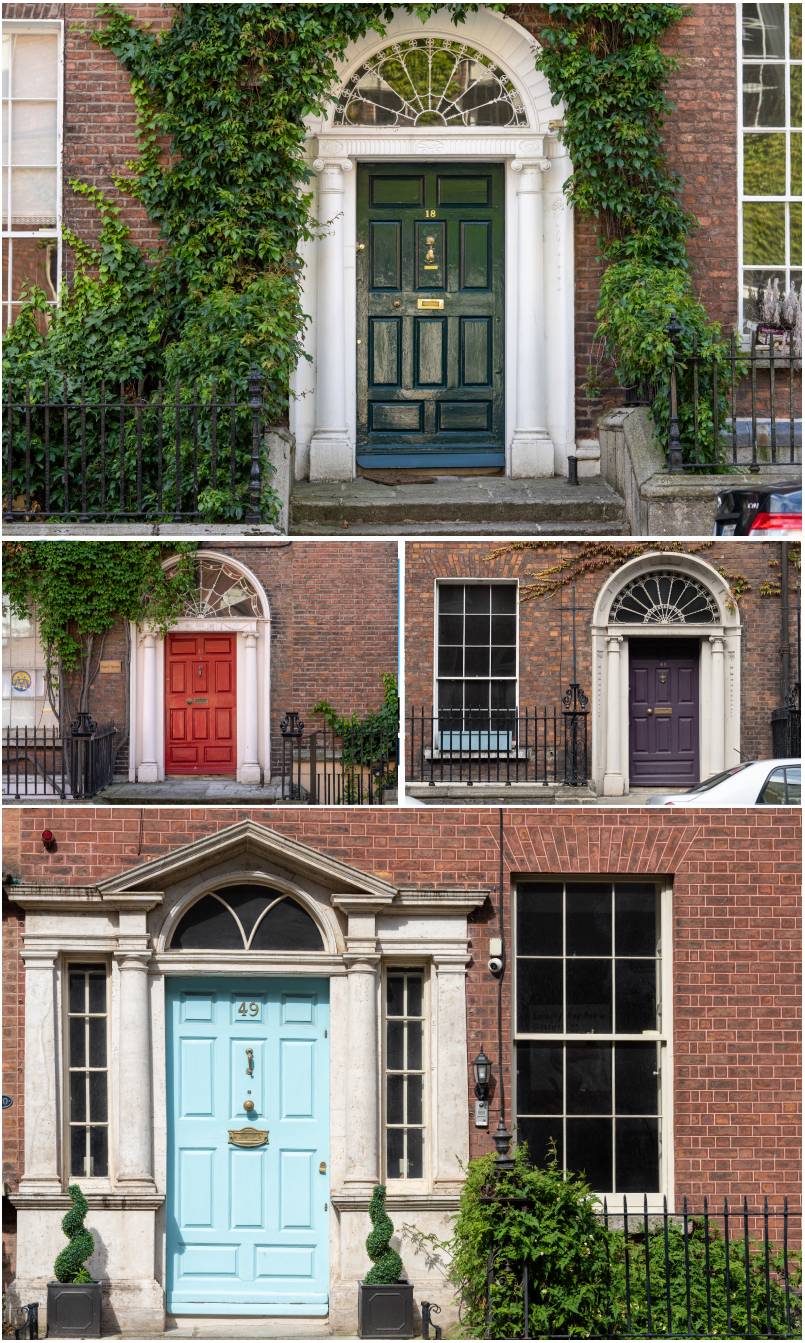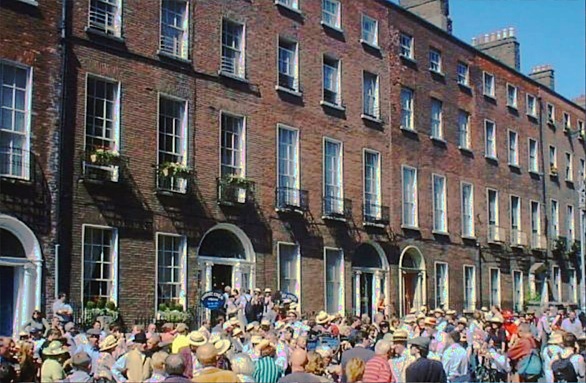North Great George's Street on:
[Wikipedia]
[Google]
[Amazon]
North Great George's Street () is a street on the Northside of Dublin city first laid out in 1766 which connects Parnell Street with Great Denmark Street. It consists of opposing terraces of 4-storey over basement red-brick Georgian townhouses descending on an increasingly steep gradient from Belvedere House which bookends the street from a perpendicular aspect to the North.
All of the original houses on the street as well as several other features are listed on the Record of Protected Structures.

 * Charles Thorp
*
*
* Charles Thorp
*
*
Name
There is some speculation over which George the street is named after however it is likelyKing George III
George III (George William Frederick; 4 June 173829 January 1820) was King of Great Britain and King of Ireland, Ireland from 25 October 1760 until his death in 1820. The Acts of Union 1800 unified Kingdom of Great Britain, Great Britain and ...
who was reigning monarch at the time of the street's construction. The nearby Church of Ireland
The Church of Ireland (, ; , ) is a Christian church in Ireland, and an autonomy, autonomous province of the Anglican Communion. It is organised on an all-Ireland basis and is the Christianity in Ireland, second-largest Christian church on the ...
parish of St. George and both the earlier Old Church of St George (1668) on Hill Street (previously Lower Temple Street) and the newer church of St George
Saint George (;Geʽez: ጊዮርጊስ, , ka, გიორგი, , , died 23 April 303), also George of Lydda, was an early Christian martyr who is venerated as a saint in Christianity. According to holy tradition, he was a soldier in the R ...
(1802) at Hardwicke Place are within a short walk of the street and may have influenced the naming convention. The street was originally simply named George's Street prior to the laying out of South Great George's Street.
History

18th century
The street is situated on the grounds of the old Mount Eccles estate which had formed part of the extensive private estate of Sir John Eccles, Lord Mayor of Dublin in 1710. The street was laid out for development by Nicholas Archdall after Royal Assent was given on 7 June 1766 for long leases to be granted for the purposes of building and the directional layout still follows the route of the old driveway to Eccles House. The street is similar in design and width to the earlier Henrietta Street and Dominick Street and maintains many of its original features including Leinster granite paving, steps, coping and parapets, cast iron ornate coal holes, boot scrapers, snuffers, railings, grilles and gas lamp holders, original doors and ornately fenestrated fanlights and sidelights, granite and calp stone-faced basements, some rusticated granite and portland stone first floors and wooden sash windows with hand blown glass. Many of the interiors still have original stucco and even fresco work while others have original panelling and wainscoted walls with original lime plastered lathes. Other features which were added during later periods have now become part of the historic fabric of the street including some of the Victorian era cast iron balconettes, cast iron lampposts and gas lamps from various different periods and various creeping plants which extend over the front of several buildings and change colour with the turning of the seasons. As with many Georgian townhouses of the period, the external appearance is subdued with plain red-brick facades however this often contrasts with elaborately decorated interiors with stuccoed walls and ceilings and ornate marble and Portland stone floor surfaces and carved wooden bannisters and cantilevered stone staircases. Interiors such as at number 19 were often designed and plastered by some of the leading craftsmen of their day such asMichael Stapleton
Michael Stapleton (born Dublin, in Dublin, Ireland, in 1747, died 8 August 1801, in Dublin) is regarded as having been the most skilled Stucco, stuccodore working in the neoclassical or Robert Adam, "Adam" style that dominated Dublin interior dec ...
and Andrew Callnan.
19th century
By the mid 19th century, the street was in decline through a combination of economic stagnation, the movement of the protestant middle classes and schools to the south of the city and southern suburbs and the decline and move of the gentry more generally after theActs of Union 1800
The Acts of Union 1800 were parallel acts of the Parliament of Great Britain and the Parliament of Ireland which united the Kingdom of Great Britain and the Kingdom of Ireland (previously in personal union) to create the United Kingdom of G ...
and again after the famine in the 1840s and 1850s.
20th century
Having largely fallen into disrepair in the early to mid 20th century, a group of conservationists from the Irish Georgian Society including politician David Norris were involved in restoring many of the buildings on the street. One group of houses towards the South end of the street owned byDublin Corporation
Dublin Corporation (), known by generations of Dubliners simply as ''The Corpo'', is the former name of the city government and its administrative organisation in Dublin since the 1100s. Significantly re-structured in 1660–1661, even more si ...
, which was leased to the Legion of Mary
The Legion of Mary (, post-nominal letters, postnominal abbreviation L.O.M.) is an international association of members of the Catholic Church who serve on a Voluntary association, voluntary basis. It was founded in Dublin, as a Roman Catholic ...
, became so derelict that they were demolished in 1984 despite objections and appeals for their preservation. They were later replaced with facsimile Georgian house frontage.
On the southeastern side of the street, seven Georgian houses were demolished from numbers 28-34 between 1984 and 1989. These were also later replaced with facsimile Georgian house frontage.
In 2000, a campaign to enclose one end of the street was launched which included installing gates which were donated to the Irish Georgian Society by Pino Harris and had originally come from Santry Court.
Residents
The street was originally built for the landed gentry and merchant families as a pied-a-terre and the largest house on the street, No. 43 was actually built from 1786 by the Rt. Hon Henry Theophilus Clements son of Nathaniel Clements who had developed Henrietta Street. A number of hereditary peers also had properties on the street in the mid-18th century. Other notable residents of the street have included; * * * - lived at number 41, Kenmare House * - born at number 2 * * * Richard Laurence and his butler Arthur Guinness resided at no.43 * resided at no. 38 * * * VariousViscount Powerscourt
Viscount Powerscourt ( ) is a title that has been created three times in the Peerage of Ireland, each time for members of the Wingfield family. It was created first in 1618 for the Chief Governor of Ireland, Richard Wingfield. However, this creat ...
and family
*
*  * Charles Thorp
*
*
* Charles Thorp
*
*
See also
*List of streets and squares in Dublin
This is a list of notable streets and squares in Dublin, Ireland.
__NOTOC__
References Notes
Sources
*
External linksStreetnames of DublinaArchiseekArchitecture of Ireland– English-Irish list of Dublin street names aLeathanach baile Sh ...
* The Belvedere Hotel (Dublin)
* Belvedere College
Belvedere College Society of Jesus, S.J. (sometimes St Francis Xavier's College) is a fee-paying voluntary secondary school for boys in Dublin, Ireland.
Formally established in 1832 at Hardwicke Street in north inner city Dublin, the school was ...
References
{{Streets in Dublin city, state=autocollapse Streets in Dublin (city) Georgian architecture in Dublin (city)